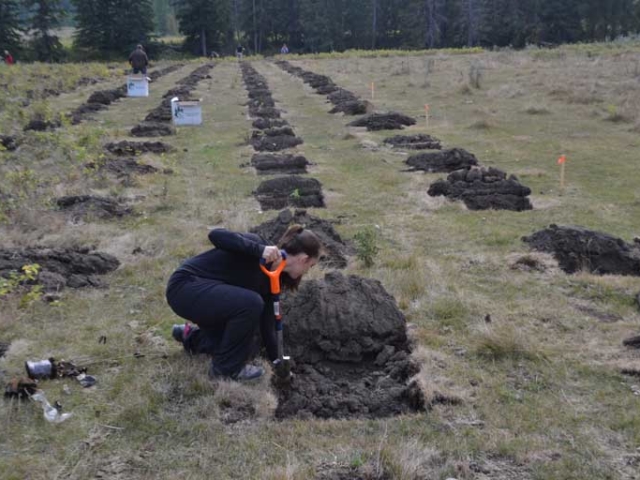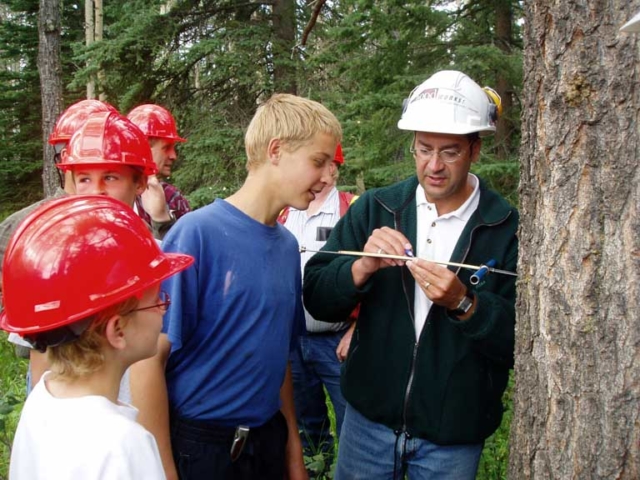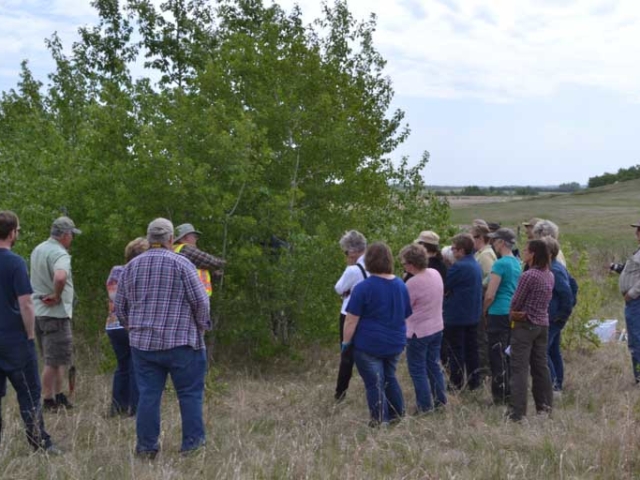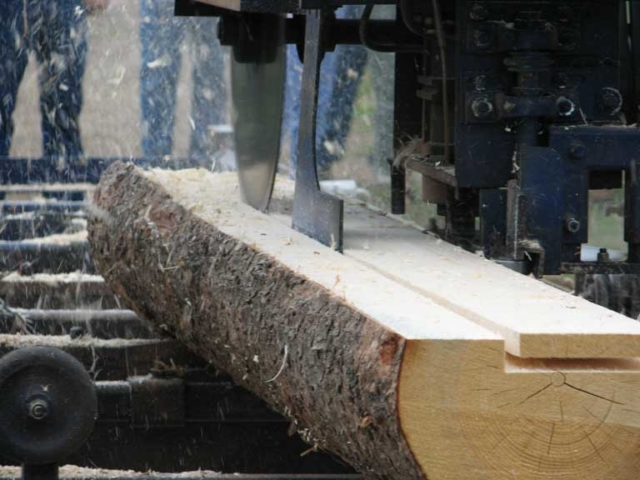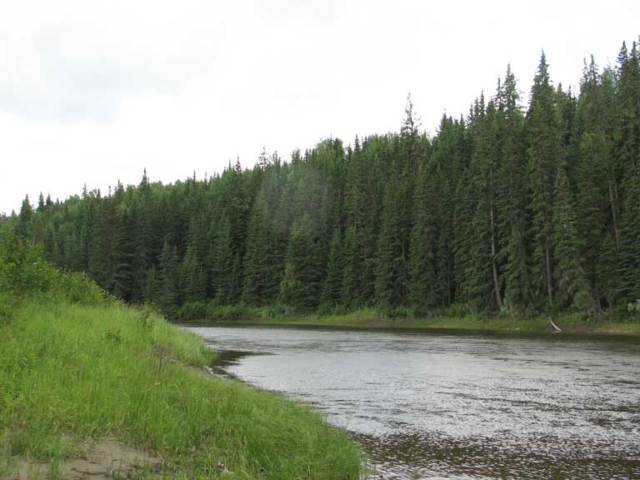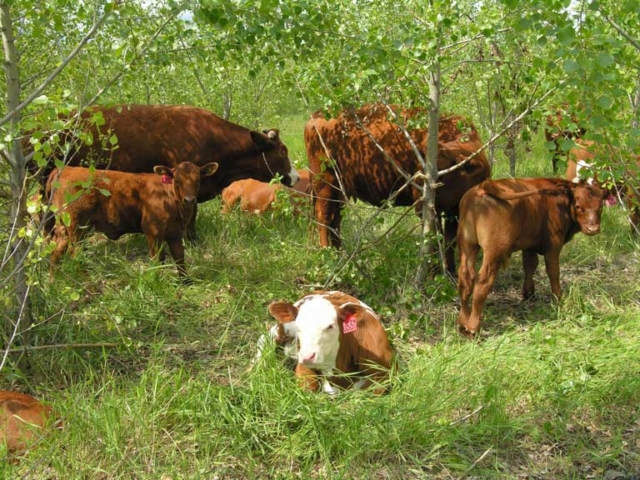Ponderosa Pine: The tree you’ll be pining over…
By: Bob Underschultz
Looking for your next favourite tree? Then look no further, cause the ponderosa takes the cake! Ponderosa pine (Pinus ponderosa) is native to the western United States and central and lower British Columbia and can grow in hardiness zones 3-7 (that means central and southern Alberta!).
The ponderosa is a giant of a tree (it gets its name from the word ponderous, meaning “heavy”) growing up to 100ft or more from cultivation and brushing the heavens at 230ft in the wild. The pine has a rough spread of 30ft and is brandished with needles as long as 20cm! Ponderosas come fully furbished with beautiful fist-sized pinecones that become stunning ornaments of nature as they dry and open up (excellent for arts and crafts or for siblings to throw at each other). The tree matures into a robust cylindrical shape, with strong and welcoming branches creating the perfect outdoor jungle gym.
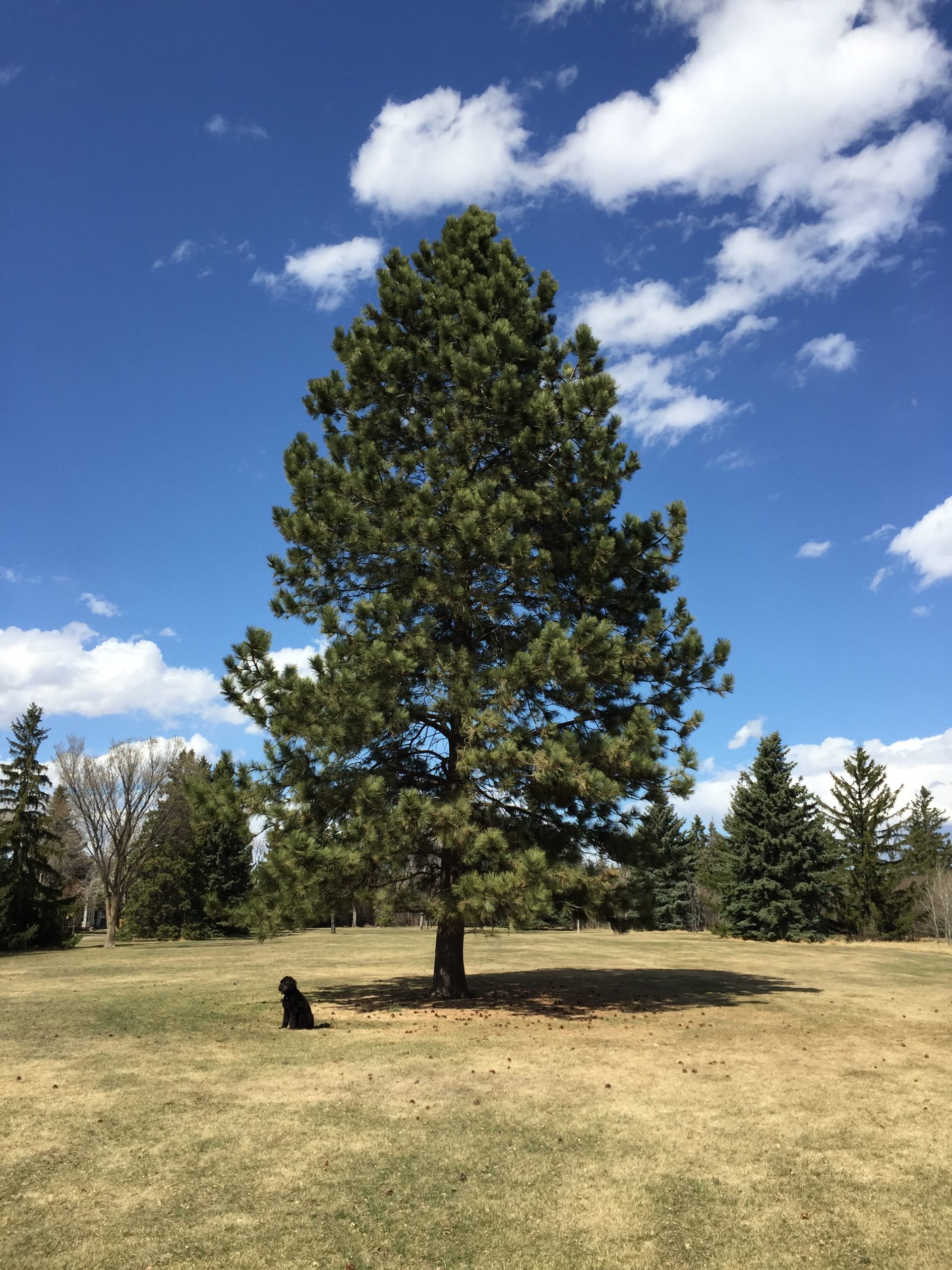
Ponderosa pine with AWES assistant Jock the doodle for scale.
Can this tree get any better? You bet it can! If Captain America is a super soldier, then the ponderosa pine is a super tree. Ponderosas are resoundingly hardy and drought tolerant, able to tolerate a range of conditions. Their bark is thick and protective, able to withstand the scorch of a forest fire. Once established, the tree can grow at a not-so-modest rate of 1-2 feet per year until it reaches its max height. Ponderosas always get the senior discount at the movie theatre as they have a lifespan of 300 to 600 years! Somewhere out there is a ponderosa the same age as King Henry VIII, having done a much better job at avoiding the axe than Henry’s ex-wives. These towering giants are also defiant in the face of strong winds, locked to the ground with a deep and extensive taproot system. The sun-loving ponderosa has a medium porosity to its foliage, allowing warm sunlight to filter through (not too hot, not too cold, right Goldilocks?).
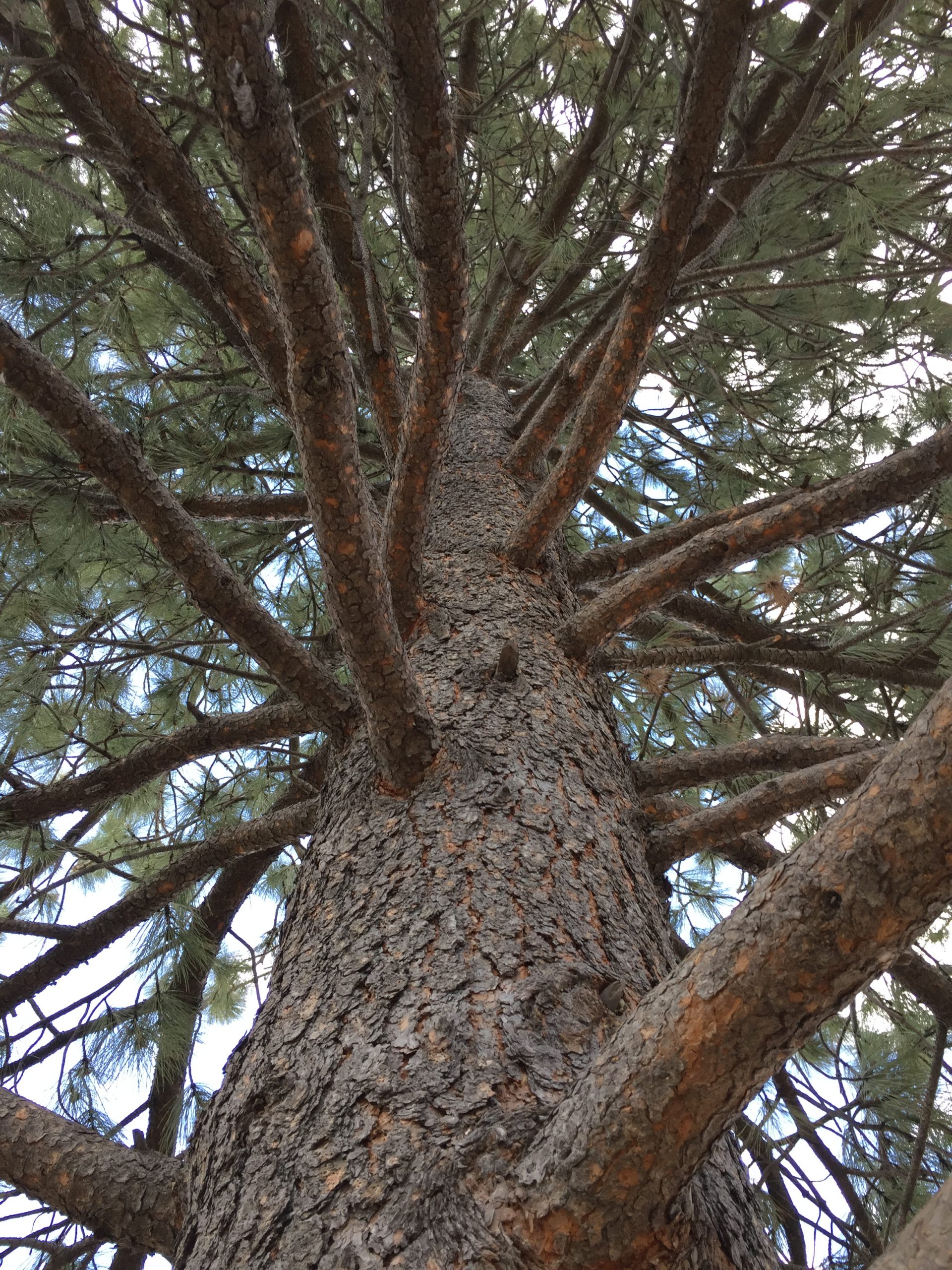
The amazing whorl of branches.
But where best to utilize this tree and ensure it can be all it is meant to be? Fret not, for the ponderosa is at home in a myriad of situations. As an accent tree in a park or a modest backyard, the ponderosa will take root and flourish, becoming the envy of the land. But if you’re looking to truly put its abilities to the test, then a shelterbelt with a row of ponderosa will be stronger than the 300 Spartans at Thermopylae! With its wind-resistance, hardiness, low maintenance, solid growth rate, and medium porosity for long-distance wind protection, the ponderosa is a perfect addition to any shelterbelt. So yes, the ponderosa pine may get its name from the word ponderous, but I like to think it’s so named because one must ponder how this tree could be so magnificent and full of grandeur. Oh, and did I mention it can survive a nuclear blast?! Yeah, go ahead and look that up…
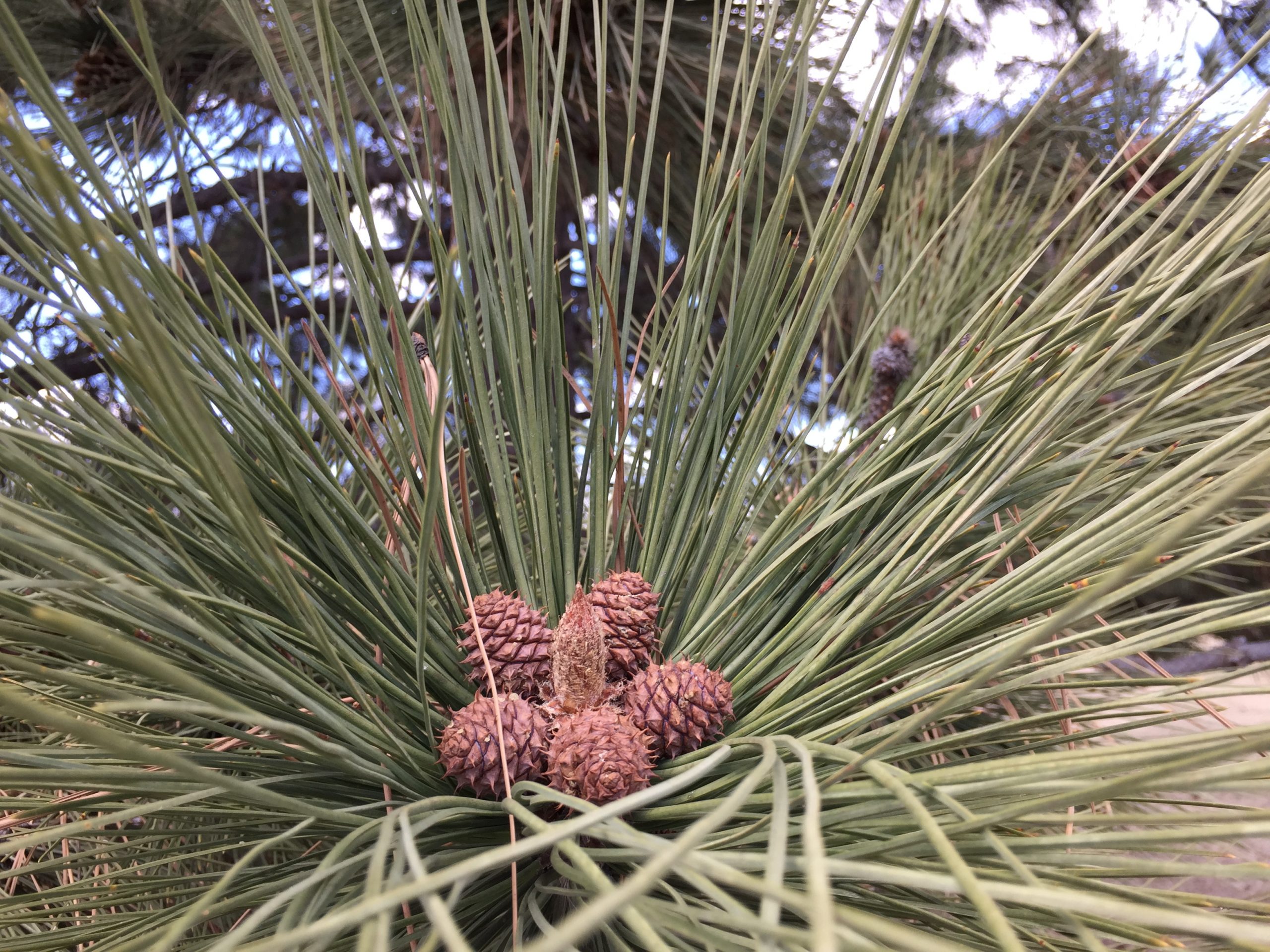
Baby pinecones
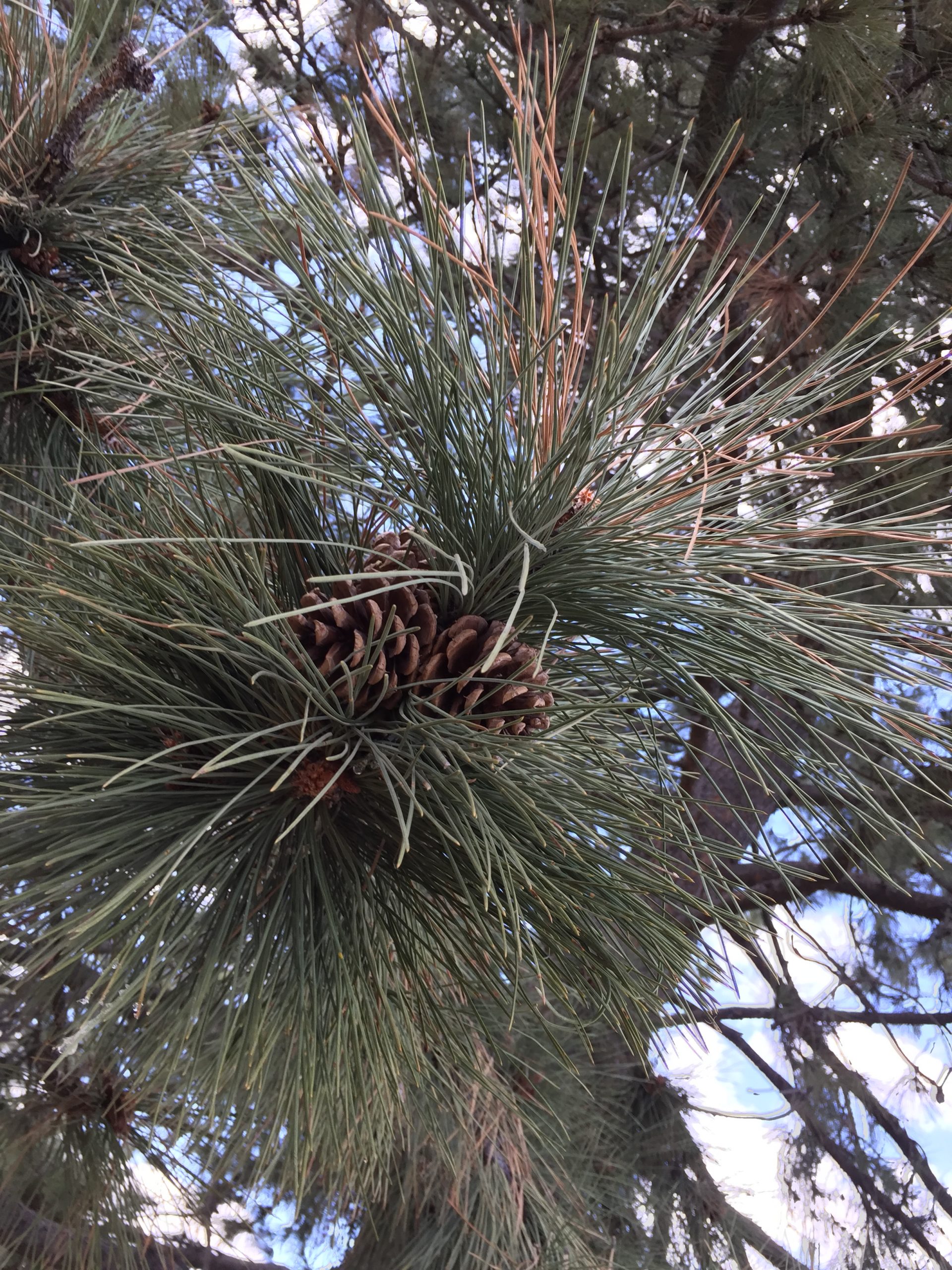
“Etsy” pinecones
References:
https://www.arborday.org/TREES/treeguide/TreeDetail.cfm?ItemID=901
https://www.nps.gov/brca/learn/nature/ponderosapine.htm
https://slate.com/technology/2013/05/nuclear-weapons-tests-on-trees-jasons-moved-a-forest-to-the-nevada-test-site.html


